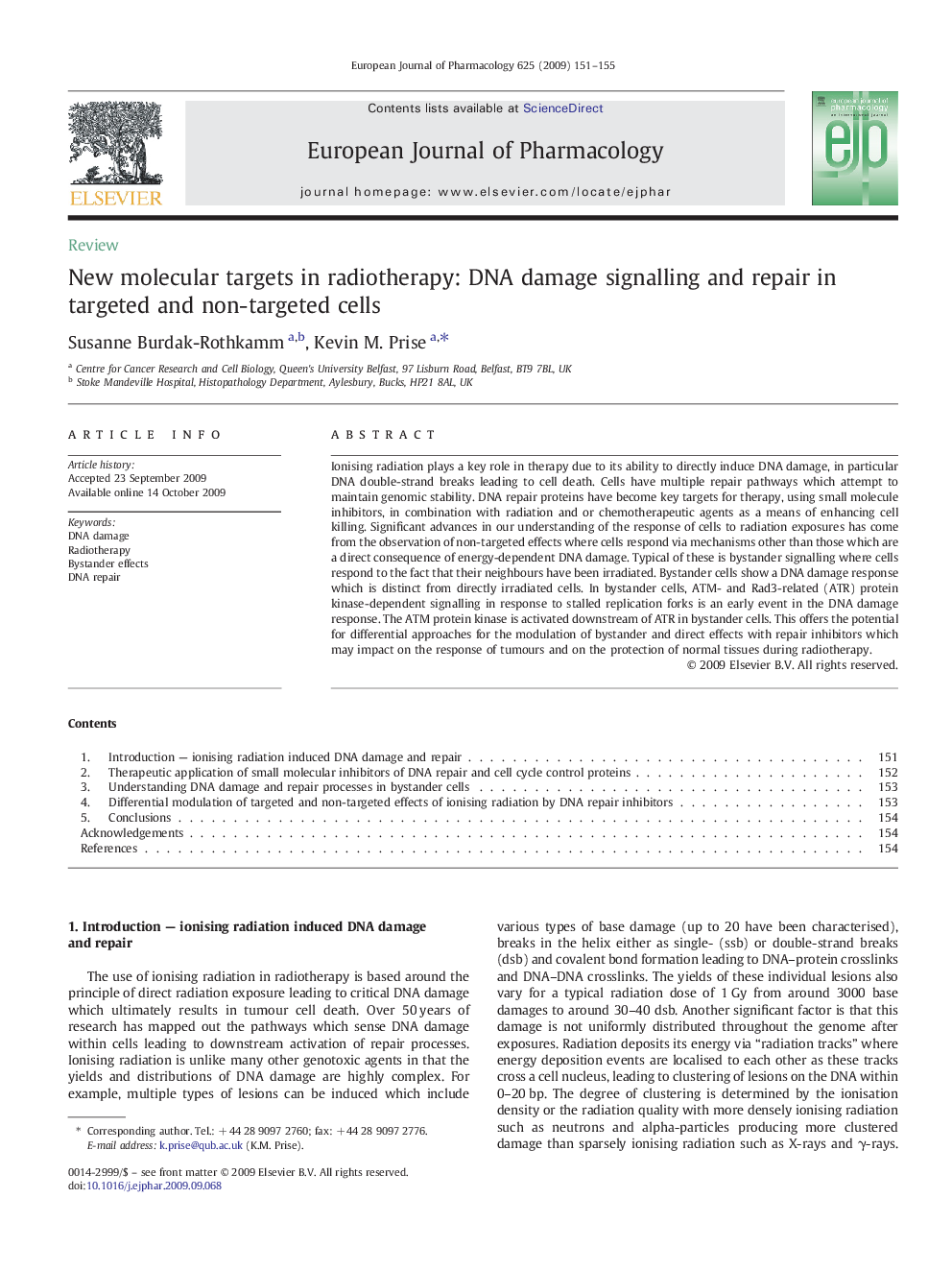| کد مقاله | کد نشریه | سال انتشار | مقاله انگلیسی | نسخه تمام متن |
|---|---|---|---|---|
| 2533980 | 1559069 | 2009 | 5 صفحه PDF | دانلود رایگان |

Ionising radiation plays a key role in therapy due to its ability to directly induce DNA damage, in particular DNA double-strand breaks leading to cell death. Cells have multiple repair pathways which attempt to maintain genomic stability. DNA repair proteins have become key targets for therapy, using small molecule inhibitors, in combination with radiation and or chemotherapeutic agents as a means of enhancing cell killing. Significant advances in our understanding of the response of cells to radiation exposures has come from the observation of non-targeted effects where cells respond via mechanisms other than those which are a direct consequence of energy-dependent DNA damage. Typical of these is bystander signalling where cells respond to the fact that their neighbours have been irradiated. Bystander cells show a DNA damage response which is distinct from directly irradiated cells. In bystander cells, ATM- and Rad3-related (ATR) protein kinase-dependent signalling in response to stalled replication forks is an early event in the DNA damage response. The ATM protein kinase is activated downstream of ATR in bystander cells. This offers the potential for differential approaches for the modulation of bystander and direct effects with repair inhibitors which may impact on the response of tumours and on the protection of normal tissues during radiotherapy.
Journal: European Journal of Pharmacology - Volume 625, Issues 1–3, 25 December 2009, Pages 151–155